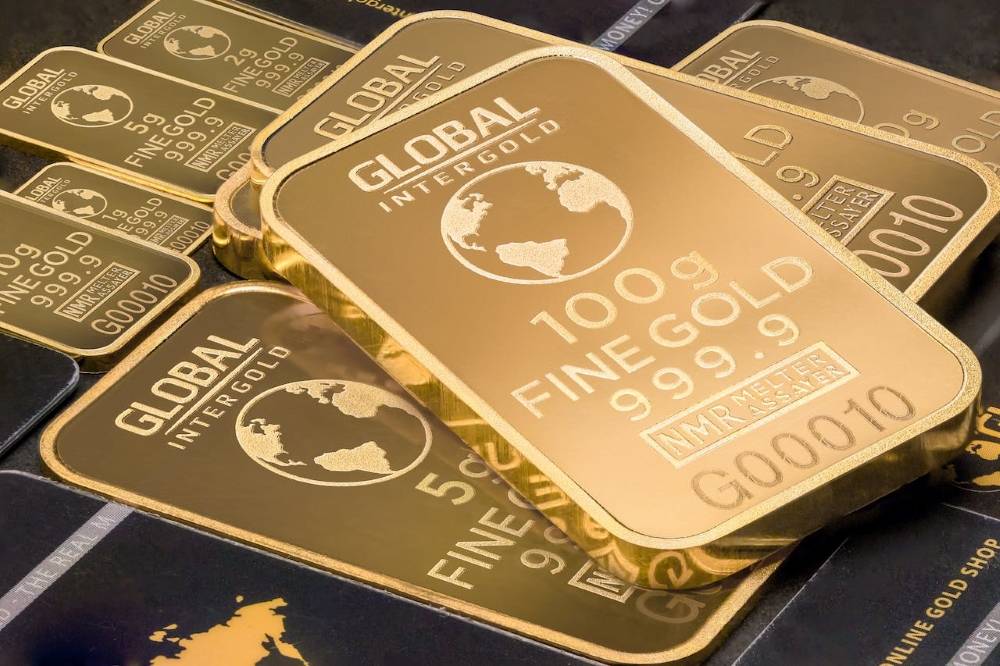Do geopolitical factors significantly influence the current price of gold?
Absolutely. The geopolitical risk from the conflict in the Middle East has caused gold prices to soar for several weeks. Gold has surpassed the $2,000 per ounce mark several times in November and has now crossed the $2,100 threshold, a historic high. Since the beginning of the year, the performance of the yellow metal is now close to 12% in euros, and gold has returned to the list of the best assets of the year.
As markets worry about the repercussions of the conflict, riskier assets have corrected significantly. The CAC40 has recently retreated noticeably. For example, gold outperformed French stocks by more than 10% in October 2023, proving that the yellow metal fully plays its role as a diversifier during international crises. In 2023, the CAC's performance is several points below that of gold. Each major crisis sees a spike in the Geopolitical Risk Index. Recently, following the outbreak of the Israeli-Palestinian conflict, it peaked on October 19. Since the early 2000s, only three events have reached higher levels: the September 11 attacks, the Iraq War, and Russia's invasion of Ukraine. These episodes have disrupted certain geopolitical balances.
The numerous elections coming in 2024 (United States, Great Britain, Russia, Indonesia, etc.) will fuel this dynamic.
Is the calming of inflation worldwide an indication that gold will no longer hold the same status as an unshakable safe-haven asset in the short term?
No, its status as a safe haven will persist. While gold acts as the ultimate safe haven in phases of severe geopolitical crises, like the one we are currently experiencing, the risk of instability should become almost constant, and gold will remain one of the most sought-after assets. Besides geopolitical impacts, global climatic conditions are unlikely to improve either, combined with inflation remaining at high levels, above 4% excluding energy and food in most developed countries, the risks are multiple, and gold will only be strengthened. However, if the price of gold and inflation are closely linked, considering the relationship as systematic and linear seems somewhat simplistic.
In a well-known 2013 article, American researchers Erb and Harvez demonstrated that gold offers good protection against inflation in the very long term. They cite the example of a Roman centurion, who is equivalent today, in terms of responsibilities, to an American infantry captain with 4 years of experience. This centurion, under Emperor Augustus, was paid roughly the same as a modern American infantry captain. Gold has thus maintained its value over 2,000 years despite inflation (and crises, wars, etc.). A remarkable property, but unfortunately lacking in practical implications: no one has an investment horizon of several centuries...
Nevertheless, gold is a good candidate for diversification and long-term protection against the risk of sustained and high inflation causing economic problems.
Is it still time to buy physical gold or should one turn to gold mining stocks?
Yes. Physical gold remains the uncorrelated investment providing the most diversification compared to other assets. We believe that the price of the yellow metal will continue to rise in the coming years and it is reasonable to make one's portfolio more resilient to crises by holding a bit of gold. However, with the current highs, buyers may be wise to stagger their purchases to smooth their entry point. Gold mining stocks have the advantage of paying a dividend, but also the disadvantage of following the stock market.
Gold mining companies are currently at rather high valuations (the sector leaders have a price that represents more than 20 times the expected profits). Finally, the scarcity of gold (which becomes more difficult to extract as "easy" deposits are depleted) is penalizing for miners, but conversely, it is favorable for the price.
Peter Schiff, CEO of Euro Pacific Capital, believes that gold could double in value and the dollar could collapse... Do you share his analysis?
Partially. With the new records in gold prices, the glass ceiling has indeed been broken. Many analysts now mention a price target of $2,500. In more complicated scenarios, especially geopolitically, we could even go much higher.
We think the next crisis vector will be state debt. This is reaching unsustainable levels ($33 trillion in the US). At the same time, the greenback is slowly but surely losing its place as the reference currency. We believe that the collision of these two phenomena promises significant monetary and financial turbulence. Predicting when this will occur is very complicated, but we are convinced that gold will play a key role in these upheavals. It's no coincidence that central banks, especially those of emerging countries, are big buyers of gold: they plan to use the yellow metal as a pillar to navigate the upcoming turbulence. Let's also remember that the biggest gold buyer in 2023 will be the Chinese central bank!
It is interesting to take a step back on this topic, what are the reasons for central banks' attraction to gold? Several causes are regularly cited to justify these purchases. Gold is a neutral asset, controlled by no one and cannot go bankrupt. Thus, for these countries, it's about acquiring financial independence and freeing themselves from the dollar, which is used by Washington as a sanctioning weapon.
There is also the desire to increase confidence in the economy and national currency, as a country relying on significant gold reserves appears more solid and resilient in times of crisis. Finally, holding a lot of gold is a way to make its population feel that the country is wealthy. There is thus a dimension of national pride, being among the nations that count.
Will the decline in bond yields and the greenback continue?
The fall in rates in 2024 is a fairly consensual view based on expectations of economic slowdown, or even recession. It's logical in the current context, given, for example, the fragility of the real estate sector. Gold benefits from this: it tends to appreciate in periods of low real rates. In the longer term, however, we do not see how rates could decrease significantly, given that they must remain sufficiently attractive to attract investors and finance the colossal public deficits and debt stocks of developed countries.
For the dollar, the key question is the 2024 U.S. elections, particularly the impact of campaign promises. Democrats and Republicans have agreed to postpone discussions on the debt ceiling until after the elections, but this topic could come back during the campaign. More generally, all elements that question the economic and political credibility of the United States should be closely analyzed.
(*) President of the National Gold Counter
Please post your comments on:
[email protected]
 Politics
Politics








